Hyogo Prefecture has a lot of great castles and thus is a must-visit for castle fans. Besides the famous and beautiful Himeji Castle, there’s another one that got really popular in recent years: Takeda Castle!
In the media it’s often called “The Castle in the Sky” or “Machu Picchu of Japan“.

Access to Takeda Castle
Takeda Castle (竹田城) is located in Asago City (朝来市), Hyogo Prefecture (map).
You can take a JR train to “Takeda Station” and then either walk up to the castle (~30 mins) or take a taxi (~10 mins).
Nearby sights are Himeji, Kinosaki, Izushi, Fukuchiyama or Amanohashidate.
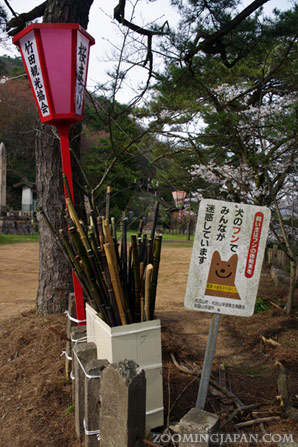
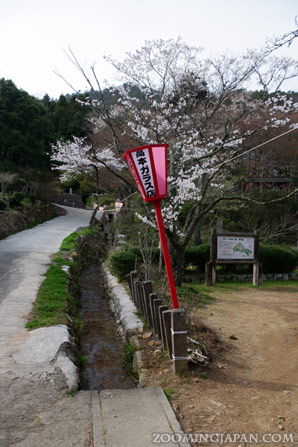
I actually went by car, but decided to park in front of the train station and walk up to the castle.
As you can see they offer bamboo sticks free of charge that might help when hiking up.
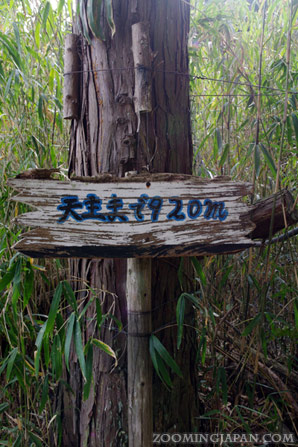
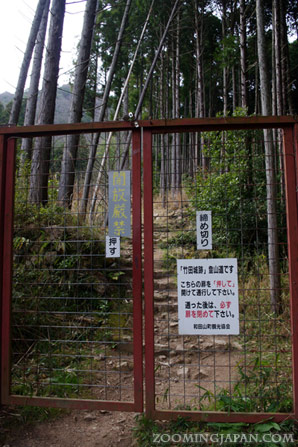
It’s about 1km until you reach the top.
If you’re young and healthy, then this shouldn’t be a problem. People with knee or back issues – or elderly people should rather take a taxi.

“The Castle in The Sky”
Takeda Castle got the nickname “Castle in the Sky” because in autumn it’s surrounded by a sea of clouds. This phenomenon can usually be observed in the early mornings from September to November, when there is a sharp temperature difference between day and night.
As I went in spring, I couldn’t witness this great sight, but check out this breathtaking video:
Beautiful, isn’t it? I’m very tempted to visit a second time just to see this!
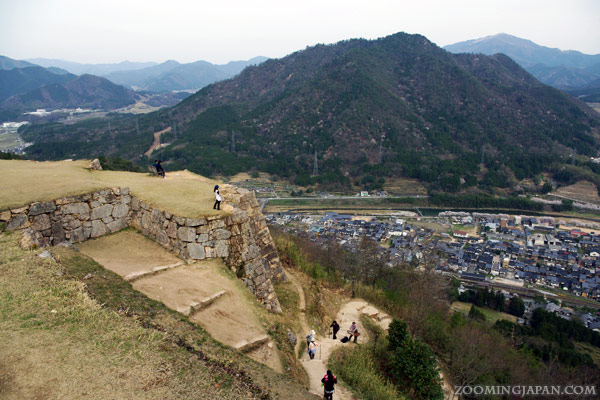
Takeda Castle’s History
It is unknown when exactly Takeda Castle was built. According to a diary it was built from 1441-1443, but some other historical documents say it was in 1431.
What is known today, though, is that the castle was built as a stronghold of Izushi Castle. Otagaki Mitsukage of the Yamana clan (山名氏) built the castle and also became its lord.
However, in 1557, Takeda Castle was conquered by Toyotomi Hideyoshi. Since then, the castle saw a lot of different lords come and go.
After 1600, Takeda Castle was abandoned.
You can read more about Takeda Castle’s history here, but it’s all in Japanese.
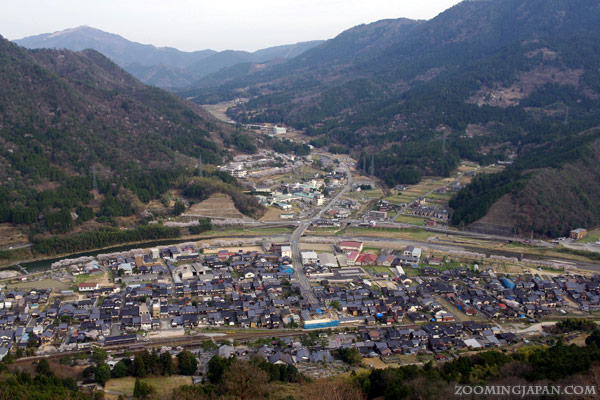
The Takeda Castle Ruins are located on a hill, about 350m above sea level. From up there you’ll have a beautiful view.
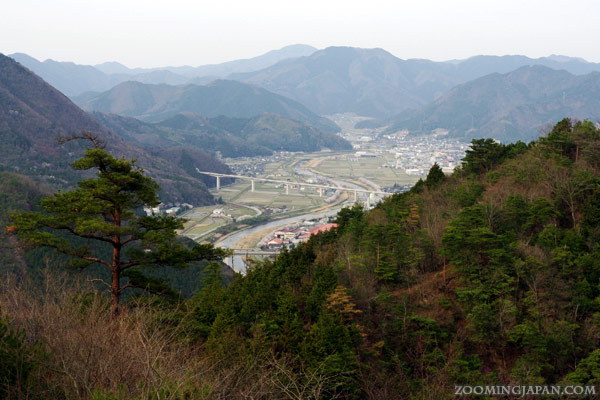
The castle ground is spacious and offers almost a 360° view.
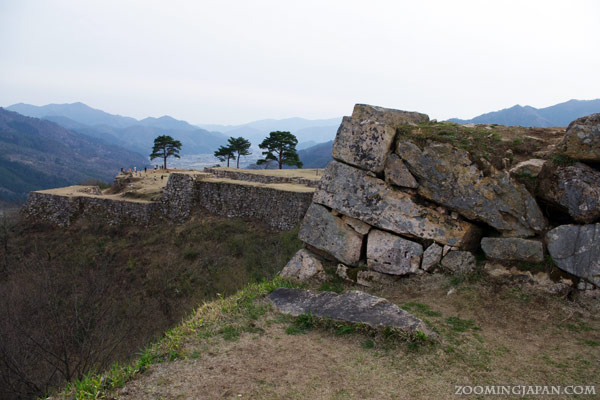
Although there is no castle building or tower left, Takeda Castle Ruins are truly impressive.
I’ve been to over 100 Japanese castles, also to a lot of ruins. I can tell you that this is by far my favorite castle ruin!
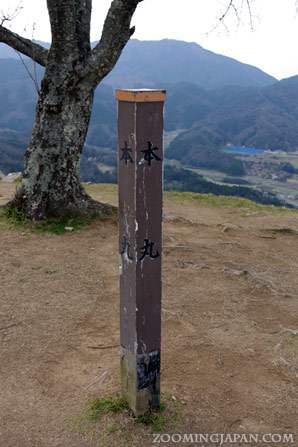
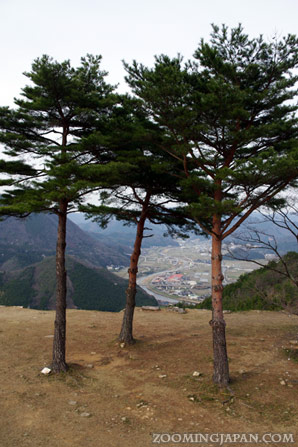
This timber peg shows us where the castle tower (honmaru) used to be.
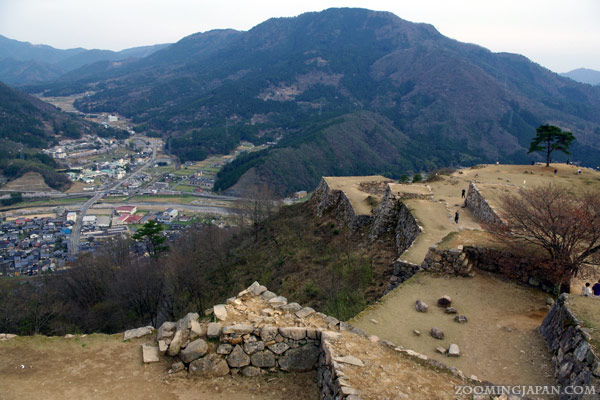
I went in early spring. While the cherry blossoms were in full bloom in the valley, they weren’t out yet up there.
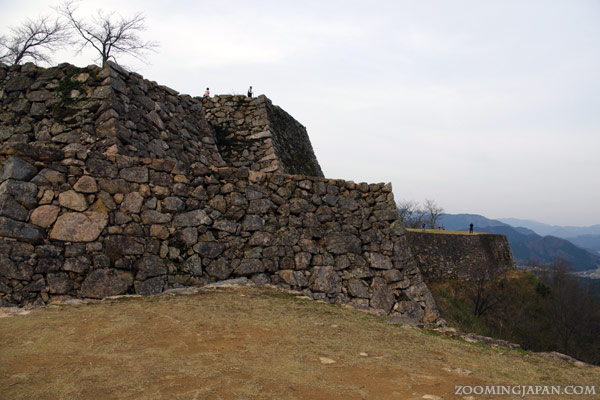
Massive castle walls remain. A very impressive sight!
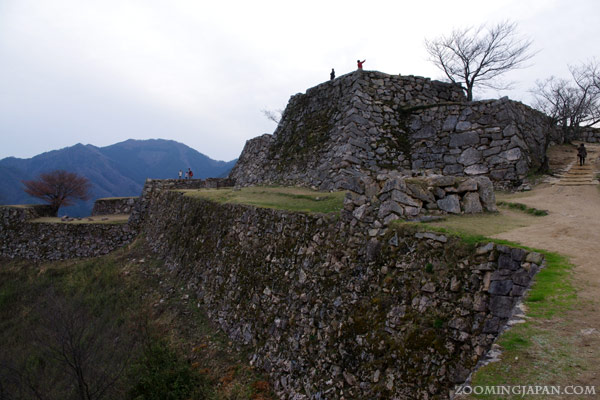
As you can see there aren’t many people in my photos, but please don’t be fooled.
Takeda Castle recently became very popular after being mentioned in the media a lot. More and more tourists keep coming.
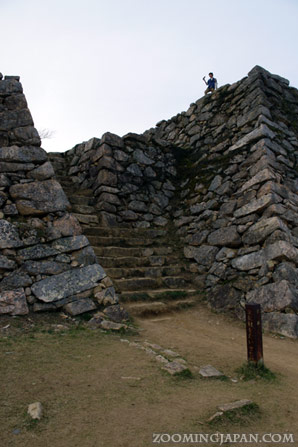
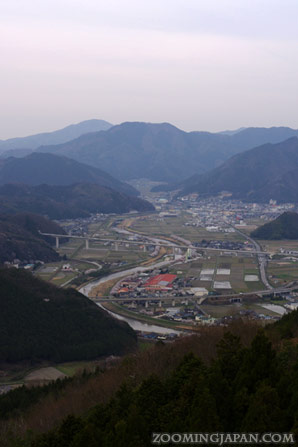
Headlines like “Swarm of tourists linked to possible collapse of Takeda Castle Ruins” pop up.
And because of that they’ve now decided to ask for a small entrance fee of 300 yen. When I visited in April 2013, it was still free of charge.
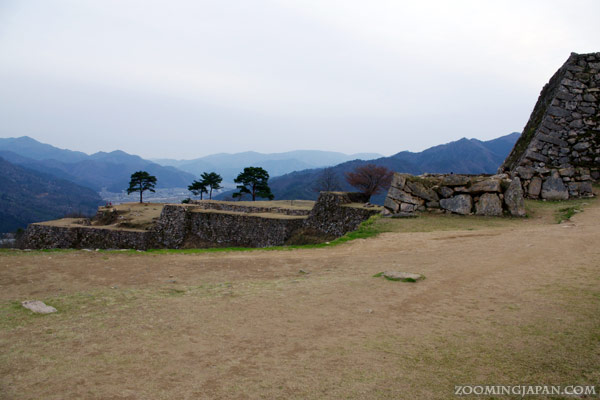
The weather was cloudy and I didn’t like the colors on the photos very much.
However, shortly before dusk the colors became really beautiful.
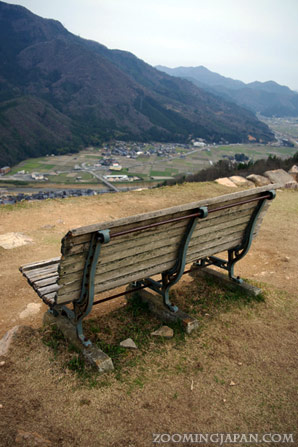
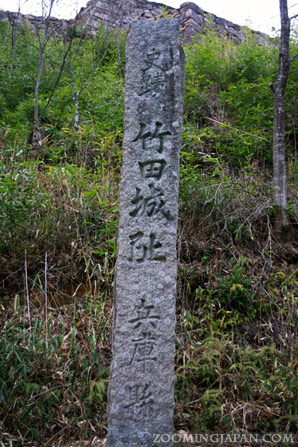
I remember sitting on this bench, instagramming. It was quiet and I could enjoy the great atmosphere and wonderful view!
The stone on the right photo says: Takeda Castle Ruins, Hyogo Prefecture.
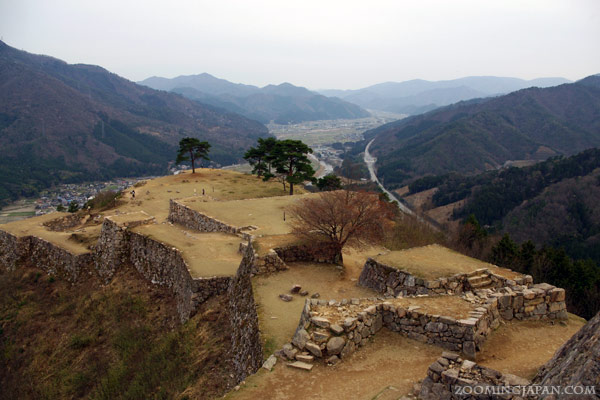
Maybe calling it the “Machu Picchu of Japan” is an exaggeration, but it is absolutely worth a visit!
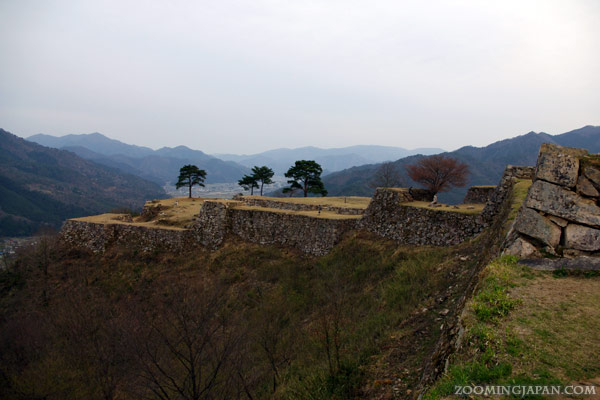
I rarely visit a sight twice, but Takeda Castle certainly goes on my “to-revisit-list”. *g*
Hopefully, I can enjoy the “sea of clouds” and witness the true “Castle in the Sky” then.





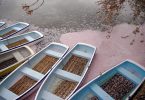



This is my favorite Castle by far, even without the main buildings being there. I hope they rebuild this castle and complete the entire complex (And include a cable car to transport us older seniors up in comfort and I might think about coming to see it). This view is spectacularly beautiful (as shown on the video), but I wonder why there are no rock walls around the top of the stone base that afford protection for archers and defenders?! In the Western world they had such stone walls as far back as Troy and Babylon 3000 years prior to this castle being built, so I still wonder why the Japanese built flat stone structures only as bases for wooden castles? Is it the elevation?
To me this is a great mystery; at the same time, I still can’t understand why they used loose stone construction on the wall exteriors that could easily be scaled by stealth! I’m wondering if it was because of the time constraints in building fortifications or because clan territories were awarded dependent on the Shogun’s whims and clan borders changed frequently; which meant that they wouldn’t want to spend a fortune building a fortification if they later had to turn it over to another clan? Maybe it was because the Japanese never used mortar mix or concrete in their construction techniques of that time period?
Again, I loved the post and the pictures and especially the video; it really has gotten my brain thinking about the kinds of warfare waged by the Japanese in the middle ages. Thanks J. for your hard work and great pictures!!! :thumbup:
P.S. I couldn’t tell by the pictures, but is that rounded stream shown in pictures 5,6 and 10 – a moat system constructed from that river on the other side of the castle? It almost looks like some kind of exterior wall is built along one side of it. Just curious?!
I am no expert, but I think it’s because it’s on a high hill.
Mountain castles and hill castles are all like that. Castles that are not on a hill usually have huge moats.
A lot of castles have all sorts of “defense options”.
I don’t think it is a moat system. ;)
So beautiful…
It is!
Have you been there yet? If not, I really recommend it for your next Japan trip! :D
Thank you so much for this interesting post. You were lucky to visit the Takeda ruins. Your pictures are beautiful. My sister and I have long wanted to visit the place, but we haven’t made it yet. I’ve heard that “the sea of clouds” and “Castle in the sky” can be seen from a hill which is a little bit far away from the ruins and you have to climb the hill which is steep. very early in the morning . Is this true? The video is fascinating!!
I don’t know how steep it is as I have yet to try that myself, but yes, you need to get up very early in the morning.
As it’s becoming more and more popular, I’d say the earlier the better. ;)
Hello every people who likes Japanese Castles !
I visited Takeda in november 2013 and it was a great experience. It’s one of castle ruins with the most historical facts and a beautiful place. We need to remember that Takeda castle was more a fortress as a castle and it’s perhaps why we can found moat as many castle in Japan. As ZoomingJapan said, the build is in 1431 and tenshu and most sophisticated defensive structure as we can see for others castles were not invented (built). For example, the first tenshu was built in Azuchi in 1576 (one another very beautiful site)
Now in Takeda there is a new office tourism (opened in november 2013), you can view many things about the ruins and there is a big model of the ruins. There is too a French restaurant (cool, i’m french) and you can visit a sake distillery. The number of people who visited Takeda ruins is very high now and many prevention things are in construction (now there is barrier around the site).
In 2014, we should have many new things about Takeda and the first will be a mascott in april (a new one special for the ruins). I hope to visite again the ruins in April during the sakura and to see in the morning the castle in the sky :-)
Ps : @Bud, i will ask to a Takeda guide why there is not defensive moat.
That’s great news! When I visited in early 2013, it was difficult to get any information.
I’m sure with the new tourism office, it’ll be a lot easier.
I hope I can find some more information during my second visit. :D
Thank you so very much Julien for the offer to obtain additional information :D . Like you, I am also becoming a great admirer of Japanese Castles. Just recently, I watched a 1953 Japanese made movie – called “Gate of Hell” about their Feudal society and it was amazing. Unfortunately there were no Castle battles shown. This movie won the Cannes film festival and an Oscar and was recognized around the world at that time.
When a battle occurred in the movie plot; the lands, money, weapons and titles would be awarded based on who won the battle and showed the most bravery and who died (they got their heads placed on the Hell Gate). It was a very colorful movie with wonderful costumes and I would recommend it for anyone to see how the Japanese viewed their own past culture during that time period (just 8 years after the end of WWII !!
Hello,
Sorry, i didn’t have more news about your question and the moat in Takeda. But i should be in Japan for 6 weeks during the Sakura and i will be in Takeda (i hope to have the castle in the cloud picture).
Do you know the movie Ran from Kurosawa. It’s a strange but fantastic movie about samurai. There is too the seven samurai (US remake The magnificent seven). Kagemusha is too one of best movie from Kurosawa. You can see battle close to castle.
Hello,
I had some informations : Takeda was built with Tatebori. Tatebori are vertical dry moat. I give you the definition given bye Jaanus website :
“A vertical dry moat. Also read tatsubori; sometimes written 立堀、竪濠. A dry moat *karabori 空堀 built vertically up a gently-sloping mountainside to protect a medieval mountain castle *yamajiro 山城. The tatebori prevented attacking forces moving horizontally across the mountain. One wall of the moat was steep and the opposite wall gentle, making it difficult to climb. The enemy caught in the tatebori was sometimes catapulted with stones. Compare with *yokobori 横堀.”
Julien, I really want to thank you for providing useful extra information. So helpful! :D
I hope they can preserve this amazing castle site for many future generations to enjoy. Unfortunately, these days the castle has become extremely popular which could cause possible damage to the ruins. I’d hate to see a day when they actually close places like this to the tourist.
I agree.
I know it’s difficult to attract a lot of tourists, but preserve something at the same time, but other sightseeing spots have managed to do just that.
Let’s hope Takeda Castle won’t be cloes to the public.
Hallo – dank deines Artikel habe ich auf meiner Reise in diesem März Takeda-jo besucht und es hat sich echt gelohnt. Allerdings der Aufstieg zu Fuß ist wirklich hart, ich musste abbrechen. Nicht nur meiner Knie wegen (und zugegebenermaßen auch Kondition), sondern weil der Boden nach der Schneeschmelze noch teils matschig war. Statt dessen fuhr ein Bus hoch (250 Yen), vom Parkplatz war es dann noch ca. 1 km auf asphaltiertem Weg.
Oben waren wohl wegen des aufgeweichten Bodens überall große Matten ausgelegt und teils auch abgesperrt, wie ich es auf deinen Fotos nicht sehen kann, man kam nicht überall bis an den Rand. Außerdem wurde an einer Stelle gebaut. Doch die Aussicht von oben ist wirklich klasse. Jetzt muss man noch mal im Herbst hin, wenn es dann wirklich wie Laputa aussieht ;-)
Gojira, freut mich wirklich sehr, dass dir die Schloßruinen gefallen haben.
Es scheint sowieso als hätte sich einiges seit meinem letzten Besuch verändert, teilweise auch wegen den Massen an Touristen, die in letzter Zeit dorthin strömen.
[…] └ source – Takeda Castle – "The Castle in the Sky" – Zooming Japan […]
[…] Artikel zu japanischen Schlössern findest du hier und […]
[…] Jasmine at ZoomingJapan has some more photos. […]